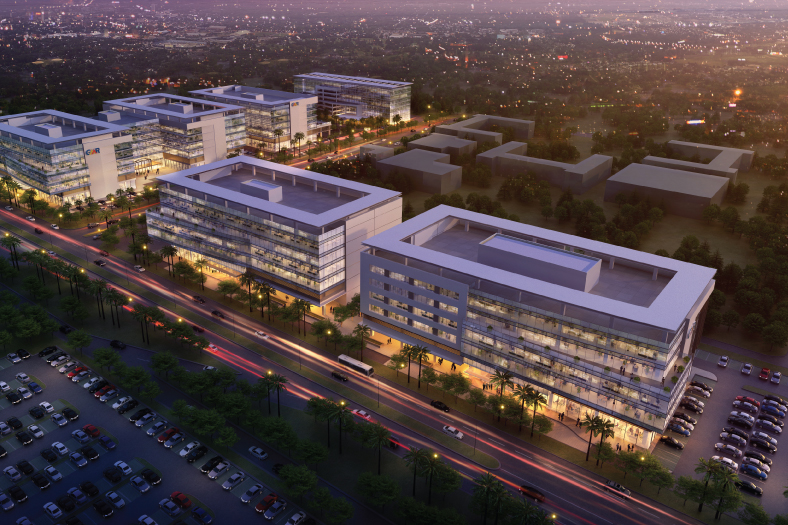Over the past few years, ‘Sustainable Development (SD)’ has emerged as the latest development catchphrase. It is an interesting phrase but serves no purpose in today’s world if they are not backed by long-term models? In brief, sustainable development should be such that meets the needs of the present without compromising the ability of future generations to meet their own needs.
Indeed, these are issues that infrastructure – one of the primary needs of growth and development – faces. Whether it is energy services, water supply, roads, railways, ports, airports, telecommunications, urban services or rural facilities, the need for infrastructural development is growing rapidly. So is the corollary need for infrastructure to be supported by technology that’s clean, innovative, and driven by transparent and long-term policy frameworks that help reduce carbon footprints of the country.
There is a need today for a paradigm shift in how countries think, build, operate and invest in long-term sustainable, clean-technology backed infrastructure development. It is increasingly apparent that the pattern of growth is just as important as the pace of growth.
With urbanisation, Indian cities are facing big challenges for the environment, economy and quality of life. McKinsey Global Institute’s report (April 2010) on ‘India’s urban awakening: Building inclusive cities, sustaining economic growth’ paints a rather challenging picture for India in the next 20 years. According to the report, Indian cities’ population will increase to 590 million by 2030 which is nearly half the country’s population of 1.2 today with over 68 cities’ headcount of over 1 million. This rapid growth of cities, in turn, will put enormous challenges on their infrastructural facilities, one of them being greenhouse gas (GHG) emissions. The report also said that India’s cities are expected to emit nearly 1.6 billion tons of Carbon Dioxide Equivalence or CO2e by 2030 from 230 million tons of CO2e in 2005.
Carbon Dioxide Equivalence (CO2e) is a quantity that describes, for a given Greenhouse Gas, the amount of CO2 that would have the same global warming potential, when measured over a specified timescale (generally, 100 years) – indeed, McKinsey’s predictions are ominous.
Eye on The FutureThe only way to increase quality of life in cities, ensure competitiveness, and at the same time protect natural resources and the environment is by promoting development of sustainable infrastructure via the clean technology route. India possesses great intellectual capabilities, dynamic entrepreneurial private sector, a demonstrated ability to compete in the global market, and a commitment to quality higher education; one needs to mobilise all these for accelerated infrastructure development. The Indian government has made clear recently that it will tap the private sector, in contrast with China’s government-financed model, to help fund and develop infrastructure projects. The 12th Plan aspires toward a planned infrastructure spend of around $ 1,000 billion or around 11 per cent of GDP, reinforcing the government’s commitment to build up Indian infrastructure. This is achievable if the problems dogging infrastructure delivery are recognised adequately, and concerted actions taken to eliminate the factors responsible for the slowdown in infrastructure spends. However, the million dollar question is that how will India raise and attract these vast sums of private investment? The inevitable answer is private industry. The private industry plays a vital role in achieving the ambitious targets for infrastructure development. In the mid-1990s governments started to open infrastructure sectors to private investment and operation to improve services. Incremental reforms have borne fruit over time, and private participation has grown in recent years. Through the PPP model, the government has been able to meet its infrastructure goals while addressing the countries’ economic, political, and populace well being. Given the vast infrastructure needs in India, a progressive approach is needed that levels the playing field, deters political and policy risk, and develops more efficient, transparent market mechanisms. If there is to be real progress toward development goals and reduced poverty, this modernisation of approaches offers a way forward.
Moreover, the Durban Meet on Climate Change has decided on a roadmap to curb emissions of greenhouse gases by both developing and advanced economies. India needs to fast-forward climate action to lower its emissions intensity and in the process considerably boost its overall energy-efficiency. However it would be impossible for India to cut absolute levels of emissions but it is eminently possible and desirable for India to reduce the carbon intensity of its growth and curb emissions that cause global warnings. India is heavily dependent on imports of fossil fuels and reducing carbon intensity would actually improve our energy security. Adopting green, environment-friendly technologies and practices would improve India’s competitive advantage and shore up energy-efficiency. However, adoption of green solutions would be capital intensive and call for much larger investment, hence the vital need for renovating and upgrading existing capacities. Energy – The ImperativeIndia has set ambitious power targets and goals to meet the ever-surmounting energy needs of the country. Currently, India requires an additional 100,000 MW of generation capacity by 2012 for which a huge capital investment is required to meet the target. At the same time, emerging areas like nuclear and renewable energy are gaining steady momentum and viewed as the predominant energy resource of the future because of its various advantages. Additionally, the Government of India has proposed double allocation for power development. This would accelerate generation capacity and attract fresh investments into the sector. With this, the government targets to add over 78,000 megawatts of capacity by 2012. In the 12th Plan 20,334 MW hydro capacity will be added through 87 power stations which is again almost double the number planned for 2007 – 12. India possesses a vast opportunity to grow in the field of power generation, transmission, and distribution. This has welcomed numerous power generation, transmission, and distribution companies across the globe to establish their operations in the country under the famous PPP programs. With over 90,000 MW of new generation capacity required in the next seven years and India pursuing a series of ’ultra mega’ (8,000-megawatt) generation projects power generation sector, the power sector is the focus area for the government now. Clean power is imperative to pave the way for sustainable development. Any sustainable development will require modernising India’s energy infrastructure. What must be added to this is that any such modernisation has to be backed by technologies that not only threaten environment but also consider that such threats add to the cost burden of the nation. Alstom, one of the key players in infrastructure segment, believes that these are over-riding issues that have manifold manifestations, and thus need to be tackled accordingly. For one, innovative finance instruments can help channel the unprecedented levels of investment needed in clean technology, while more and more new technologies can be ushered only by public policy and funding sharing risk appropriately with the private sector. In fact, PPP is a key element of delivery, particularly in a growth-infused economy like India. Further, policy frameworks need to be long-term as much as transparent, and based on pricing carbon, so as to help reduce policy uncertainty and risk. Transport – The KeyIt is universally recognised that transport is crucial for sustained growth and modernisation. Adequacy of this vital infrastructure is an important determinant of the success of a nation’s effort in diversifying its production base, expanding trade and linking together resources and markets into an integrated economy. It is also necessary for connecting villages with towns, market centres and in bringing together remote and developing regions closer to one another. Transport, therefore, forms a key input for production processes and adequate provision of transport infrastructure and services helps in increasing productivity and lowering production costs. India’s transport sector is large and diverse; it caters to the needs of 1.1 billion people. In 2007, the sector contributed about 5.5 percent to the nation’s GDP. Since the early 1990s, India’s growing economy has witnessed a rise in demand for transport infrastructure and services. Look at the statistics: By the end of 2012, train passenger numbers in India are expected to increase to 8.4 billion annually. Indian Railways’ current five-year plan foresees investments of approximately €39 billion until 2012. Today, forty-five Indian cities are above 1 million inhabitants and more than 10 urban projects are in progress or planned in Bangalore, Chennai, Delhi, Hyderabad, Kochi and Kolkata. India’s metro market is all set to rise to unprecedented levels owing to its growing urban and suburban transportation system with high traffic volumes. These statistics are a testimony of the importance of transportation in the context of India’s economic growth. Large investments have been made for the development of the transport sector in India and there is a greater reliance on the private sector to ensure the expansion of transport infrastructure and facilities. A number of benefits will accrue as a result of private sector participation in the development of transport infrastructure and services. The most obvious benefit will be the expansion of transport infrastructure. In addition, private sector participation is expected to help upgrade the technology, improve the quality of infrastructure services and lower the costs and prices of services. The importance of private sector participation in bridging the resource gap and improving the operational and managerial efficiency of the sector has been recognised. With the Government taking new initiatives the involvement of the private sector will increase in the future as the sector gains more confidence in undertaking transport projects through partnership arrangements with the public sector and the overall environment becomes more conducive to private participation through conscious efforts of government. ChallengesIt is widely believed that the infrastructure industry in India has enjoyed several positive indicators such as exponential demand for infrastructure, an unprecedented pace of growth, increasing Technological sophistication, success of the PPP model and infrastructure incentives amongst others. While these indicators are likely to continue unabated, given the strong inclination the Indian Government has towards developing the infrastructure of the country, certain hard facts such as time and cost overruns threaten to limit the sector’s potential to achieve growth projections and help ensure efficiency of capital expenditure. Planned infrastructure spends however tell only half the story. Successful and timely project delivery, by the government and private sector alike, are imperative to realise the desired growth and consequent benefits. Moreover, environment, health and safety (EHS) is yet to evolve in many projects. With increased international and domestic scrutiny, ensuring effective measures for maintaining EHS at projects is seen as imperative not only from compliance perspective but also from social and economic perspectives. Courtesy: Alstom
Cookie Consent
We use cookies to personalize your experience. By continuing to visit this website you agree to our Terms & Conditions, Privacy Policy and Cookie Policy.









